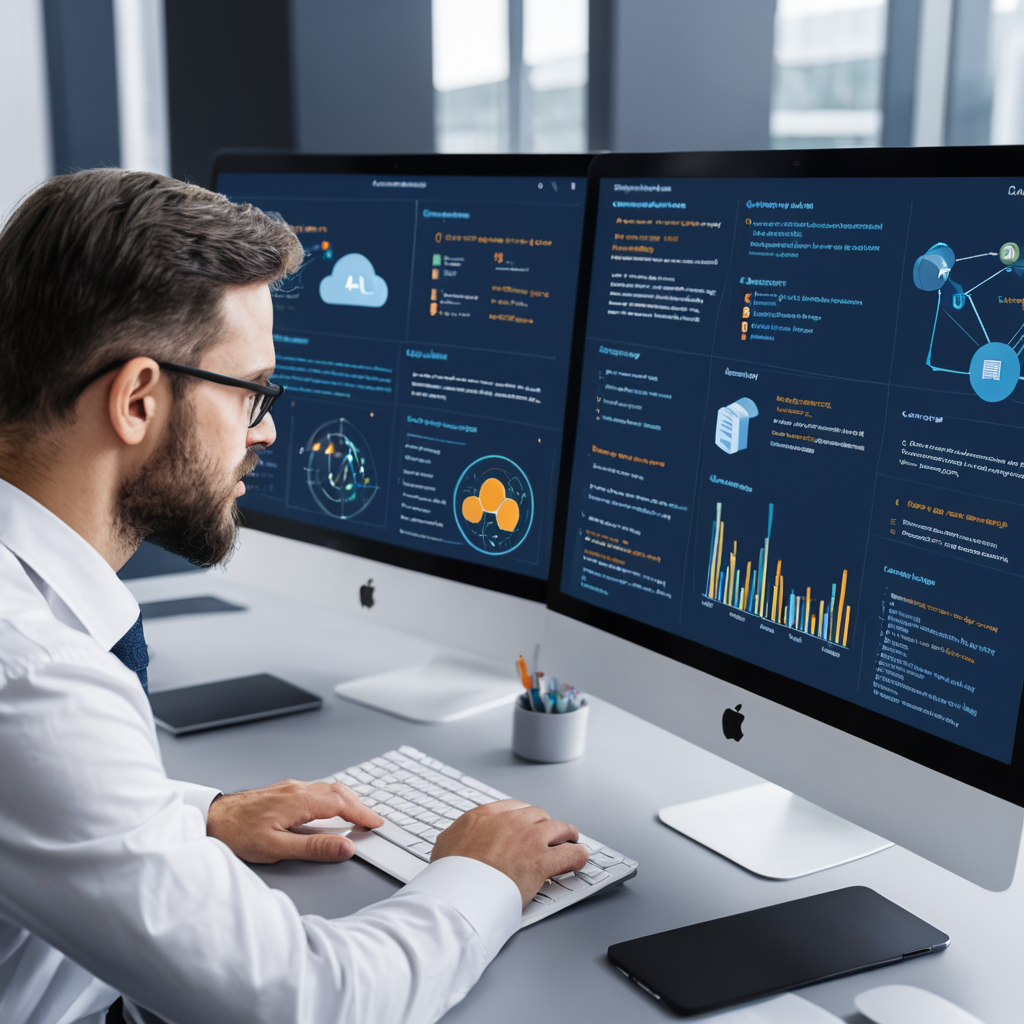- October 31, 2024
“Sai Manimanoj: Pioneering Innovations at Intellisoft Technologies”

Technical Insights into IT Consulting and Software Development
In today’s fast-paced digital landscape, companies like Intellisoft Technologies are essential in helping businesses harness technology to improve their operations. Let’s dive into some common questions we encounter in this field and explore our thoughtful approaches.

What methodologies do you apply in project management and software development, and why?
At Intellisoft Technologies, we lean heavily on Agile methodologies. Why? Because they’re flexible and promote continuous improvement. Agile allows our teams to work in iterations, which is vital when client needs and market conditions are always shifting. For projects where requirements are set in stone, we might switch to Waterfall, offering a structured path where each phase builds on the last. This versatility in methodology lets us effectively cater to various project demands.
How do you approach requirement gathering for custom software projects?
Gathering requirements is one of the first and most critical steps we take. We kick off with workshops and stakeholder interviews to get a clear picture of the project’s scope. Additionally, we reach out to end-users through surveys and questionnaires to understand their needs better. This comprehensive approach ensures that we capture both functional and non-functional requirements, laying a solid foundation for a successful project.
What experience do you have with cloud service providers like AWS, Google Cloud, or Azure for enterprise solutions?
We have substantial experience with cloud service providers, especially AWS and Azure. For example, we utilize AWS Lambda for serverless computing, which helps us scale applications cost-effectively. On Azure, we leverage Azure SQL Database for reliable data management. These cloud services empower us to build flexible and secure applications tailored to our clients’ unique needs, ultimately enhancing their operational efficiency.
How do you ensure software scalability and performance optimization in applications?
Scalability is crucial, so we design our applications with a microservices architecture. This approach allows us to scale individual components independently based on demand. We also implement load balancing and caching strategies, along with regular performance testing, to identify and fix bottlenecks. This ensures that our applications maintain optimal performance, even during peak usage times.
Can you explain your process for maintaining security and data integrity in software solutions?
Security is a top priority in every project we undertake. We follow industry best practices, including data encryption and conducting regular security audits. Compliance with regulations like GDPR and HIPAA is particularly important for clients in sensitive sectors, such as healthcare and finance. We also implement role-based access controls and conduct thorough testing, including penetration testing, to address potential vulnerabilities proactively.
Which programming languages and frameworks are your primary choice for developing web and mobile applications, and why?
Our development team primarily uses JavaScript for front-end applications, especially with frameworks like React, due to their performance and scalability. For back-end development, we prefer Python because of its versatility and the wealth of libraries available. These technologies allow us to deliver high-quality, efficient solutions that truly meet our clients’ needs.
How do you handle API integrations for enterprise solutions, and can you give an example of a complex integration you have managed?
We stick to RESTful principles when developing APIs and use tools like Postman for testing. A recent project involved integrating payment processing APIs for an e-commerce client, which required meticulous planning to ensure secure transactions and a seamless user experience. This project highlights our commitment to delivering robust and reliable integrations that enhance overall functionality.
What strategies do you use for version control and collaborative development?
Version control is vital for maintaining code quality and fostering collaboration among team members. We use Git alongside platforms like GitHub to manage our code repositories. Our workflow includes regular code reviews and automated testing, which helps uphold high standards of code quality. This structured approach encourages a collaborative environment where everyone can contribute effectively.
Can you describe a successful IT consulting project where you streamlined a client’s business process? What tools or technologies were key in achieving success?
One memorable project involved a logistics company struggling with its inventory management process. We developed a custom software solution that integrated tools like Microsoft Power BI for data analytics and Python scripts for automation. The results were impressive, with a significant reduction in manual errors and improved processing times. This success story showcases the transformative impact technology can have on business operations.
How do you measure and improve user experience (UX) in software solutions?
User experience is at the heart of our design philosophy. We conduct user testing and surveys to gather feedback and use tools like Google Analytics to track user behavior. This data drives our decisions, allowing us to make iterative improvements to the UI/UX. Our ultimate goal is to create intuitive applications that cater to both technical and non-technical users, ensuring a positive interaction with our software solutions.